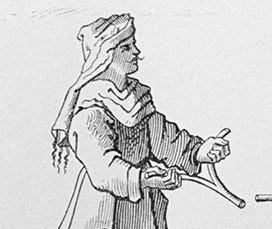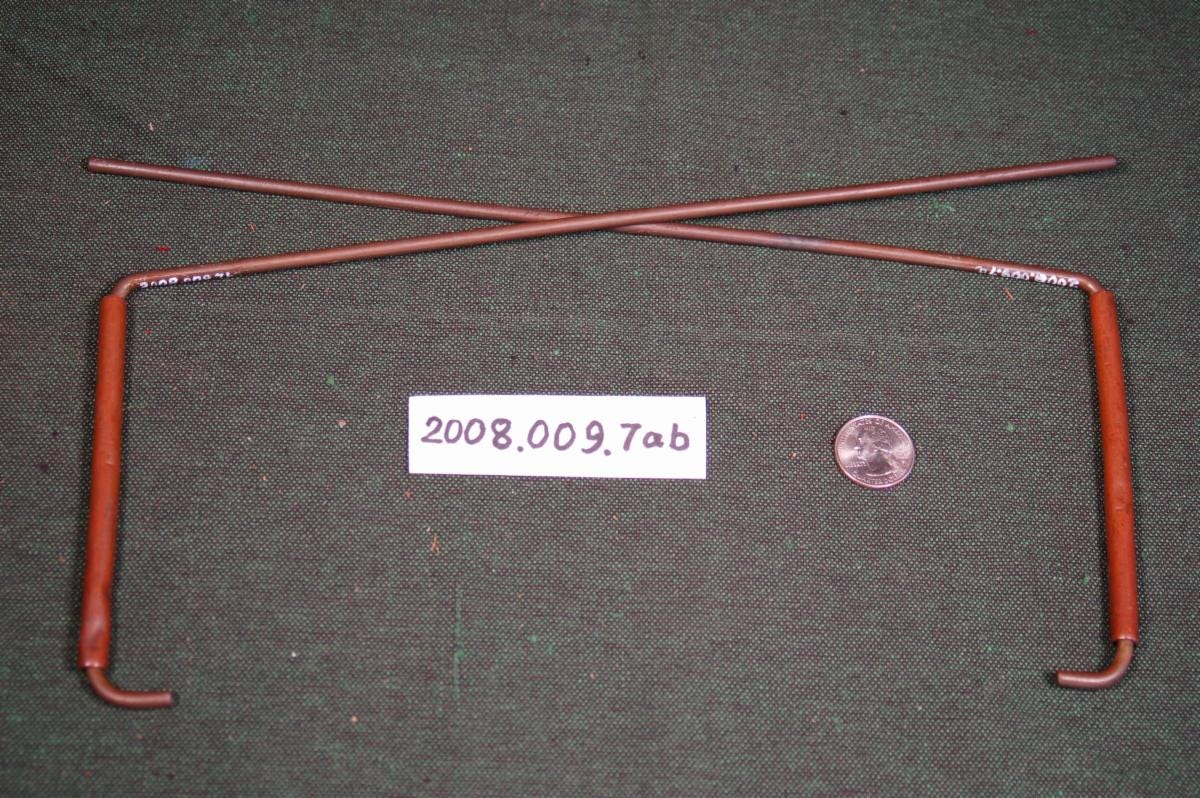From the History Buzz archives: Divining and dowsing
Before there was History Buzz, there were over 100 stories emailed to our readers from another platform. From the archives is an occasional look back to a time before History Buzz started buzzing.
Summer 2022 began, and will likely end later this month, on a very dry note. Earlier this year, The Farmers’ Almanac predicted a hot, dry summer for most of the country. Sure enough, this year is considered a “significant drought.”
Let’s take a look back to August 4, 2020, to a short post, “Drought? Maybe these will help...,” written by What’s It Wednesday writer Marilyn Helmers.
In this current drought, maybe these will help…
These are divining rods or dowser rods for locating underground water sources. L shaped metal rods aren’t required. Dowsers of old made do with a Y-shaped branch. Others just divined (or located) water by walking the land.
Many dowsers tend to prefer branches from witchhazel trees, but willow or peach branches are also used. The two ends of the Y are held one in each hand, palms up, with the long part pointing upward at a 45-degree angle. The dowser then walks along the ground where he/she hopes to find water. The theory is that the branch will dip downward where water is to be found.
Metal rods like the ones in our collection are held one in each hand like holding two pistols, long ends pointing outwardly. If the rods cross one another, a water source has been located.
Divining, also known as water witching, water dowsing or water finding, dates back centuries. It has believers and non-believers aplenty.
Divining as we know it today, first appeared in Germany in the 1500s as a technique for finding metals in the ground. In 1558, Martin Luther denounced divining for metals as a transgression of the first commandment.
Dowsing for water was first described in 1568, in a narrative of the Life of St. Theresa of ̒Ávila Spain, who observed a Friar Anthonio using a stick to find water that sustained a well - “a plentiful fount of water gushed forth, excellent for 'drinking, copious for washing, and it never ran dry.’ ”
By 1662 dowsing was declared to be "superstitious, or rather satanic.”
Since that time, dowsing has had its ups and downs. And has endured endless scientific studies. There have been many theories to explain how it works (or doesn’t).
A study in the 1800s, stated that paranormal activity influenced the movement of the rod. Another concluded that successful rod movement results were due to unconscious muscular action. In 1986, David Marks, a British psychologist attributed a dowser’s success to the use of sensory cues and sub-conscious indications from the terrain and probability.
Carl Sagan’s book Universe notes that in 1990, a group of 30 expert dowsers were invited to Kassel, Germany to have their skills tested in an organized study conducted in a field with underground pipes filled with flowing water. “All failed to do better than random guessing.”
The US Geological Survey pamphlet on Water Dowsing acknowledges that,
Water dowsers practice mainly in rural or suburban communities where residents are uncertain as to how to locate the best and cheapest supply of groundwater…. The natural explanation of ‘successful’ water dowsing is that in many areas underground water is so prevalent close to the land surface that it would be hard to drill a well and not find water.
Here’s a short video you might enjoy. There’s a short history given around minute 1:10.
Thanks for reading! I’d love to hear about your dowsing experience. Leave a note in the comments, like, share, and subscribe to support the work that makes History Buzz possible.
~Elaine
Resources:
American Society of Dowsers, https://dowsers.org/









I am among the unconvinced. I first saw dowsing on looney tunes... believe it or not.
Fascinating history of divining - but sadly reminiscent of witchcraft beliefs...